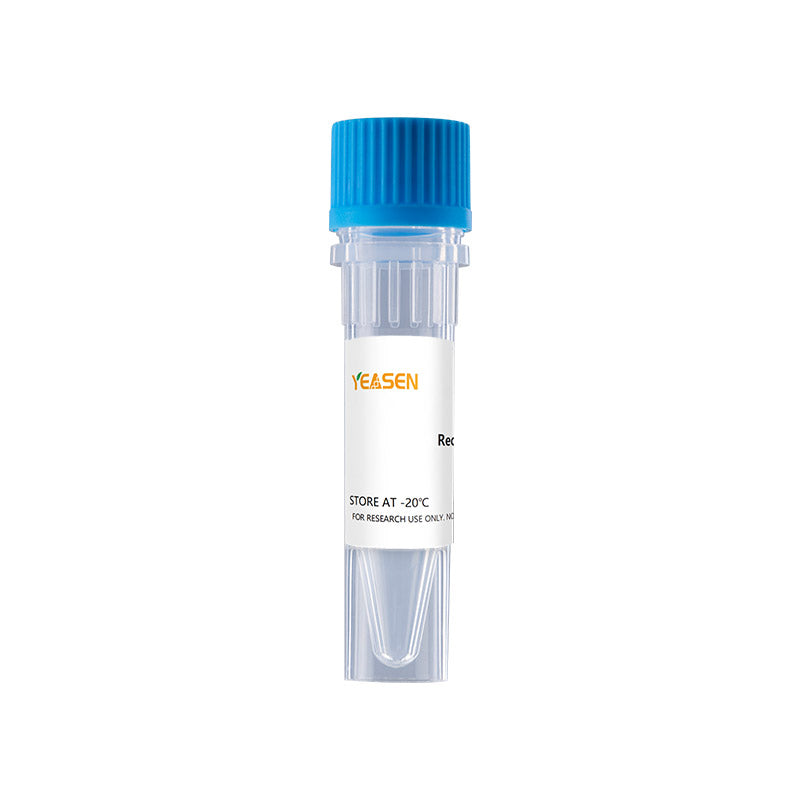Description
Interferons (IFN) are a family of cytokines with potent antiviral, antiproliferative and immunomodulatory properties, classified based on their binding specificity to cell surface receptors. There are more than a dozen closely related IFN alpha subtypes found in both the human and mouse genome, each sharing about 80% amino acid (aa) sequence homology. There are several variants of human IFNA2, IFNA2a, IFNA2b and IFNA2c, which only differ by a few point mutations. The extracellular domain (ECD) of mature human IFNA2b shares 59% aa sequence identity with mouse IFNA2. The type I IFNs bind to the interferon alpha receptor (IFNAR), which consists of two subunits: IFNAR1 (alpha -subunit) and IFNAR2 (beta -subunit). While individual IFN alpha subtypes are known to display unique efficacies to viral protection, nothing is known about functions unique to IFNA2 in human physiology. However, IFNA2 has become the representative type I IFN subtype used in basic research and numerous clinical applications. Since being first approved for treatment of hairy cell leukemia in 1986, IFNA2b has been approved for the treatment of several malignancies including AIDS-related Kaposi's sarcoma, malignant melanoma and chronic hepatitis B and C. More recently, human IFNA2b has been tested as a potential treatment for COVID-19.
Product Properties
|
Synonyms |
IFN-alpha 2b protein |
|
Accession |
|
|
GeneID |
|
|
Source |
Yeast-derived Human IFN-α2a protein,Cys24-Glu188(K23R). |
|
Molecular Weight |
Approximately 19.2 kDa |
|
AA Sequence |
CDLPQTHSLG SRRTLMLLAQ MRKISLFSCL KDRHDFGFPQ EEFGNQFQKA ETIPVLHEMI QQIFNLFSTK DSSAAWDETL LDKFYTELYQ QLNDLEACVI QGVGVTETPL MKEDSILAVR KYFQRITLYL KEKKYSPCAW EVVRAEIMRS FSLSTNLQES LRSKE |
|
Tag |
None |
|
Physical Appearance |
Sterile Filtered White lyophilized (freeze-dried) powder. |
|
Purity |
> 98 % by SDS-PAGE and HPLC analyses. |
|
Biological Activity |
Fully biologically active when compared to standard. The specific activity determined by an anti-viral assay is no less than 1.6 × 108 IU/mg. |
|
Endotoxin |
< 0.1 EU per 1μg of the protein by the LAL method. |
|
Formulation |
Lyophilized from a 0.2 µm filtered solution in PBS, pH 7.4, with 0.02 % Tween-20. |
|
Reconstitution |
We recommend that this vial be briefly centrifuged prior to opening to bring the contents to the bottom. Reconstitute in sterile distilled water or aqueous buffer containing 0.1% BSA to a concentration of 0.1-1.0 mg/mL. Stock solutions should be apportioned into working aliquots and stored at ≤ -20°C. Further dilutions should be made in appropriate buffered solutions. |
Shipping and Storage
The products are shipped with ice pack and can be stored at -20 ℃ for 1 year.
1 month, 2 to 8 °C under sterile conditions after reconstitution.
3 months, -20 °C under sterile conditions after reconstitution.
Recommend to aliquot the protein into smaller quantities when first used and avoid repeated freeze-thaw cycles.
Cautions
- Avoid repeated freeze-thaw cycle
- For your safety and health, please wear lab coats and disposable gloves for operation.
- For research use only.
Payment & Security
Your payment information is processed securely. We do not store credit card details nor have access to your credit card information.
Inquiry
You may also like
FAQ
The product is for research purposes only and is not intended for therapeutic or diagnostic use in humans or animals. Products and content are protected by patents, trademarks, and copyrights owned by Yeasen Biotechnology. Trademark symbols indicate the country of origin, not necessarily registration in all regions.
Certain applications may require additional third-party intellectual property rights.
Yeasen is dedicated to ethical science, believing our research should address critical questions while ensuring safety and ethical standards.

